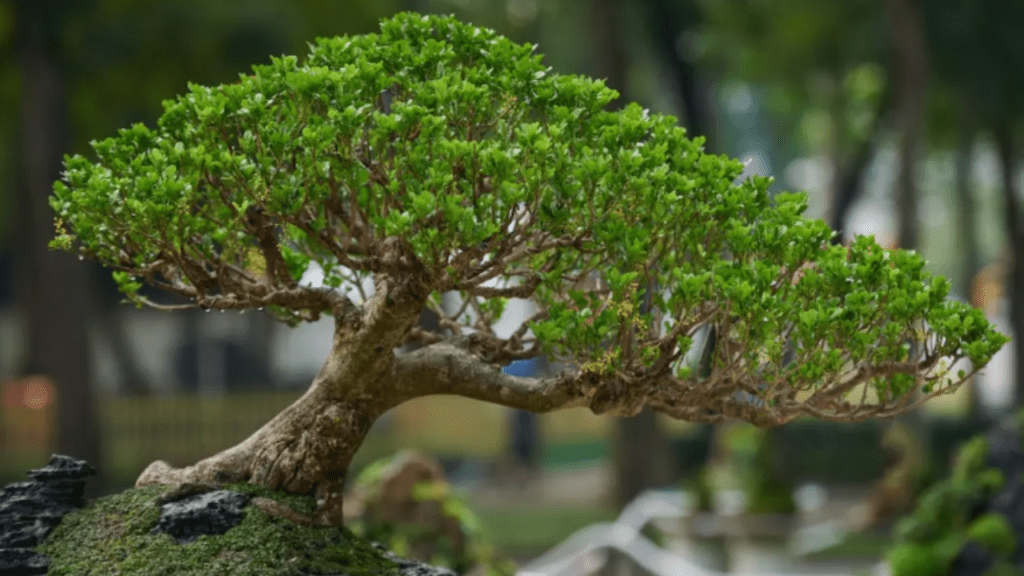
Ultimate Guide to Planting Bonsai Seeds: Tips and Techniques for Beginners
Starting a bonsai tree from seed can be a rewarding experience, but it does require some knowledge and skills to be successful. The first step is to choose the right type of seeds for your desired bonsai tree. Once you have selected your seeds, it’s important to prepare the soil and containers for planting. Proper watering and sunlight are essential for the germination process, and you’ll need to pay close attention to the unique needs of each type of bonsai seed.
One of the most important tips to remember when planting bonsai seeds is to be patient. Growing a bonsai tree from seed takes time and dedication, so it’s important to stay committed to the process. As your seeds begin to germinate and grow, you’ll need to carefully monitor their progress and make adjustments to their care as needed.
By following the tips and techniques outlined in this guide, you can successfully plant and nurture bonsai seeds to create beautiful, healthy trees. Whether you’re a beginner or an experienced gardener, growing bonsai trees from seeds is a rewarding and enjoyable hobby that can bring years of beauty and enjoyment to your home.
When it comes to growing bonsai trees, starting from seeds is an important step in the process. Choosing the right type of seeds for the specific bonsai tree you want is crucial for success. Once you have selected your seeds, it’s essential to prepare the soil and containers for planting. Proper watering and sunlight are vital for the germination process, and you’ll need to pay close attention to the unique needs of each type of bonsai seed. It’s important to be patient when planting bonsai seeds, as growing a bonsai tree from seed takes time and dedication. As your seeds begin to germinate and grow, you’ll need to carefully monitor their progress and make adjustments to their care as needed. By following the tips and techniques outlined in this guide, you can successfully plant and nurture bonsai seeds to create beautiful, healthy trees. Whether you’re a beginner or an experienced gardener, growing bonsai trees from seeds is a rewarding and enjoyable hobby that can bring years of beauty and enjoyment to your home.
Table of Contents
ToggleUnderstanding Bonsai
Is a fascinating art form that involves the cultivation of small trees in containers. Growing bonsai trees from seeds is an important aspect of this art form. Starting from seeds allows you to have full control over the growth and development of your bonsai tree from the very beginning. It’s crucial to select the right type of seeds for the specific bonsai tree you want to grow. Once you have chosen your seeds, it’s important to prepare the soil and containers for planting. Proper watering and sunlight are essential for the germination process, and you’ll need to pay close attention to the unique needs of each type of bonsai seed.
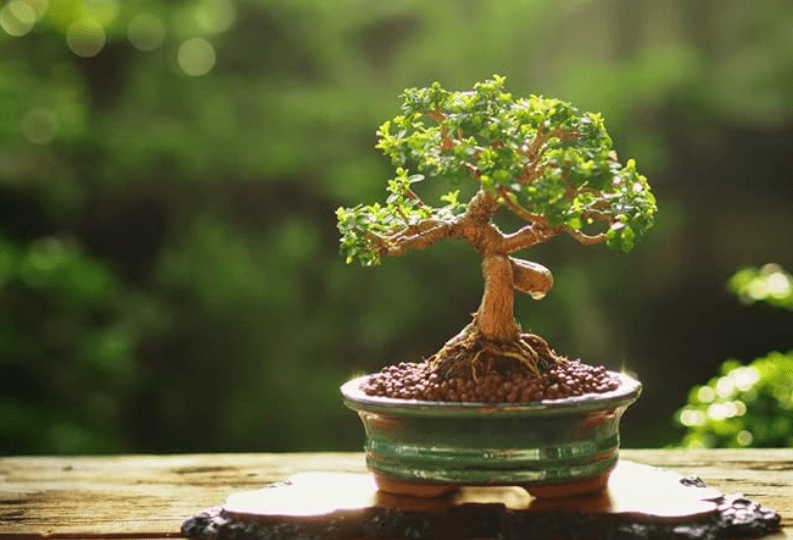
Growing bonsai trees from seeds requires patience and dedication. It takes time for the seeds to germinate and grow into healthy trees. As your seeds begin to grow, you’ll need to monitor their progress and make adjustments to their care as needed. With the right techniques and care, you can successfully plant and nurture bonsai seeds to create beautiful, healthy trees.
Whether you’re a beginner or an experienced gardener, growing bonsai trees from seeds can be a rewarding and enjoyable hobby. It allows you to create unique and beautiful trees that can bring years of beauty and enjoyment to your home. With the right knowledge and care, you can successfully grow and cultivate bonsai trees from seeds.
Definition and history of bonsai
Bonsai is the Japanese art form of growing miniature trees in containers. The word “bonsai” itself means “planted in a container” in Japanese. This practice is believed to have originated in China over a thousand years ago and was later adopted by the Japanese. Bonsai trees are carefully pruned and shaped to create a balanced and aesthetically pleasing tree that mimics the appearance of a full-sized tree in nature. The art of bonsai is highly regarded and has a rich history of tradition and cultural significance. It is a practice that requires patience, precision, and a deep understanding of horticulture. In modern times, bonsai has become popular worldwide as a form of artistic expression and as a way for people to connect with nature. Whether you are a beginner or an experienced gardener, growing and cultivating bonsai trees can be a rewarding and meditative hobby that allows you to create living works of art.
Benefits of growing bonsai from seeds
Include the satisfaction of nurturing a tree from its earliest stages and having complete control over its development. It also allows you to choose the exact species and variety of tree you want to grow, giving you more flexibility and creativity in your bonsai designs. Growing bonsai from seeds also ensures that the tree is healthier and better adapted to its environment, as it has not been subjected to the stress of being transplanted from a nursery. Additionally, it can be a more cost-effective way to start a bonsai collection, as seeds are often less expensive than pre-bonsai trees. Overall, growing bonsai from seeds allows for a deeper connection to the art form and a greater sense of accomplishment in creating beautiful and unique miniature trees.
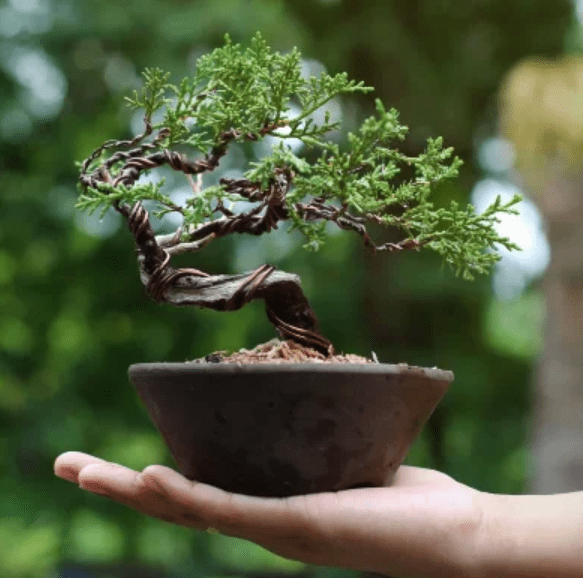
Different types of bonsai trees suitable for seed planting
Include Japanese maple, juniper, pine, elm, and cherry blossom. Each species has unique characteristics and growth patterns, giving you the opportunity to create a diverse and visually striking collection of bonsai trees. It is important to research the specific requirements for each type of tree, such as sunlight, water, and soil conditions, to ensure successful seed planting and growth. Additionally, consider the climate and growing conditions in your area to determine which bonsai tree species will thrive in your environment. With proper care and attention, growing bonsai trees from seeds can be a fulfilling and rewarding experience.
Preparing to Plant Bonsai Seeds
Choosing the right seeds
Is the first step in growing a successful bonsai tree. When selecting seeds, it’s important to consider the specific type of tree you want to grow. Different species of trees have different requirements for soil, sunlight, and water, so it’s essential to choose seeds that are suitable for your climate and environment. Some popular bonsai tree species suitable for seed planting include Japanese maple, juniper, pine, elm, and cherry blossom. Each of these species has unique characteristics and growth patterns, so it’s important to research the specific requirements for each type of tree before planting the seeds. Additionally, consider the climate and growing conditions in your area to determine which bonsai tree species will thrive in your environment. By choosing the right seeds and understanding the specific requirements for each type of tree, you can set yourself up for success in growing healthy and beautiful bonsai trees from seeds.
Understanding germination requirements
Is crucial when preparing to plant bonsai seeds. Each type of tree has specific needs for germination, such as temperature, moisture, and light. It’s important to research the germination requirements for the specific species of bonsai tree you want to grow. Some seeds may require stratification, which is a process of simulating natural conditions, such as cold temperatures, to initiate germination. Others may need scarification, which involves breaking or softening the seed coat to allow moisture to penetrate and initiate germination. Understanding these requirements and providing the necessary conditions will increase the chances of successful germination and healthy seedlings. Additionally, using high-quality soil and proper watering techniques will also contribute to the successful germination and growth of bonsai seeds. By understanding and meeting the germination requirements, you can ensure the best possible start for your bonsai tree.
Necessary tools and materials
Include a suitable growing container, high-quality potting soil, a water sprayer, and a clear plastic bag or dome to create a mini greenhouse environment. The container should have drainage holes to prevent waterlogging, and the potting soil should be well-draining to avoid root rot. A water sprayer will help to keep the soil evenly moist without disturbing the delicate seeds, and the clear plastic bag or dome will help to maintain the humidity levels necessary for germination. Additionally, having a heat mat or grow lights can help to provide the right temperature and light conditions for germination, especially if you are growing bonsai seeds indoors. These tools and materials are essential for creating the optimal environment for germinating bonsai seeds and ensuring the successful growth of your bonsai tree.
Step-by-Step Guide to Planting Bonsai Seeds
Preparing the seeds
Is the first step in growing a bonsai tree. Start by soaking the seeds in warm water for 24 hours to help soften the seed coat and promote germination. After soaking, carefully remove any remaining seed coating and gently pat the seeds dry with a paper towel. Once the seeds are clean and dry, it’s time to plant them in the prepared container with the potting soil. Make sure to plant the seeds at the appropriate depth and spacing, and lightly cover them with a thin layer of soil. After planting, use the water sprayer to moisten the soil and cover the container with the clear plastic bag or dome to create a mini greenhouse environment. Place the container in a warm, well-lit area and monitor the moisture levels to ensure that the seeds remain evenly moist. With patience and proper care, your bonsai seeds will germinate and begin the journey to becoming a beautiful bonsai tree.
Selecting and preparing the soil
Is an important step in the process of growing bonsai trees. When selecting soil for your bonsai, it’s important to choose a well-draining soil mix that will provide the necessary nutrients for your tree to thrive. You can find pre-mixed bonsai soil at gardening centers or create your own mix using components such as akadama, pumice, and lava rock. Once you have selected the soil, it’s important to prepare it for planting. Start by sifting the soil to remove any large particles and create a fine, uniform texture. This will help to ensure proper drainage and aeration for your bonsai tree. Additionally, you may want to consider adding a layer of mesh over the drainage holes in the bottom of your bonsai pot to prevent the soil from escaping while still allowing excess water to drain out. Properly preparing the soil will create the ideal environment for your bonsai tree to grow and thrive.
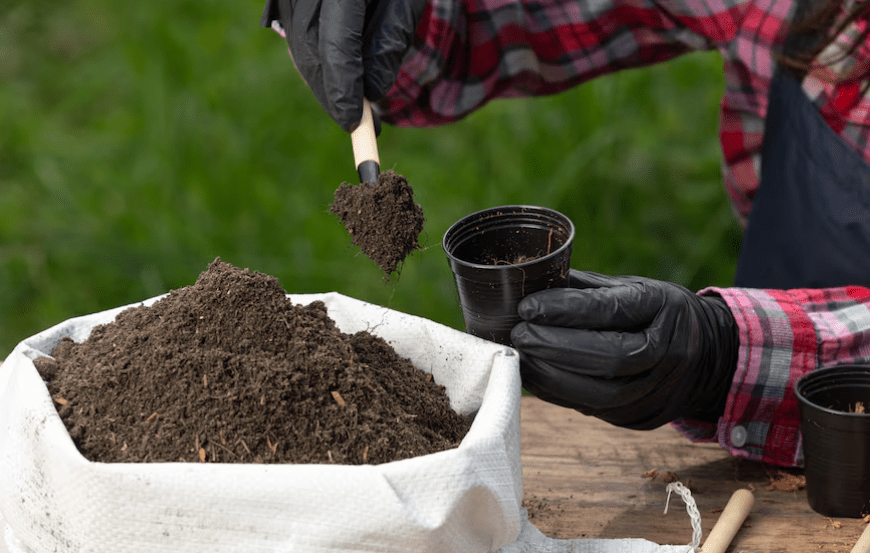
Planting the seeds
Is an essential step in the process of growing a bonsai tree. Once you have selected the perfect soil mix, it’s time to plant the seeds. Start by filling your bonsai pot with the prepared soil, leaving enough space at the top for the seeds. Gently place the seeds on top of the soil, making sure to space them out evenly. Cover the seeds with a thin layer of soil and lightly water the pot. It’s important to keep the soil consistently moist as the seeds germinate and begin to grow. As your bonsai tree starts to grow, it’s essential to provide the right care and attention to help it thrive. This includes regular watering, pruning, and repotting as needed. With the right soil, proper planting techniques, and ongoing care, you can successfully grow a beautiful and healthy bonsai tree from seeds.
Germination and Early Growth
Optimal conditions for germination
Include providing the right temperature, moisture, and light for the seeds to sprout. The soil should be well-draining and nutrient-rich to support the growth of the seeds. It’s important to keep the soil consistently moist, but not waterlogged, to promote germination. Providing the right amount of sunlight or artificial light is also crucial for the seeds to start growing. Additionally, maintaining a stable and warm temperature can help to speed up the germination process. By creating optimal conditions for germination, you can set your bonsai seeds up for success and ensure that they have the best chance of growing into healthy and vibrant trees.
Monitoring and caring for seedlings
Is crucial for their healthy growth. Once the seeds have germinated and the seedlings have emerged, it’s important to continue providing the right conditions for their growth. This includes regular watering to keep the soil moist, but not waterlogged, and ensuring that they are receiving adequate sunlight or artificial light. It’s important to monitor the growth of the seedlings and make adjustments to their care as needed. This may include repotting them into larger containers as they grow, fertilizing them to provide essential nutrients, and pruning any unwanted growth to encourage the development of the desired bonsai tree shape. By monitoring and caring for the seedlings, you can help them to grow into strong and healthy bonsai trees.
Transplanting and Initial Training
Are crucial steps in the growth of a bonsai tree. Once the seedlings have grown strong enough, they should be transplanted into a larger container to provide them with more room for root development. When transplanting, it’s important to carefully remove the seedlings from their original container and gently prune the roots to promote healthy growth. After transplanting, the initial training of the bonsai tree begins. This involves shaping the tree to achieve the desired form and style. This can be done through wiring and pruning the branches to create an aesthetically pleasing shape. It’s important to be patient and consistent in the training process, as it may take several years to achieve the desired appearance of the bonsai tree. By providing the right care and training, you can help your bonsai tree to grow into a beautiful and unique work of art.
Long-term Care and Maintenance
Seasonal care tips
When it comes to caring for your bonsai tree, it’s important to consider the changing seasons. In the spring, make sure to keep an eye on the watering needs of your bonsai as it begins to grow new leaves and branches. During the summer, it’s essential to protect your bonsai from extreme heat and keep it well-watered. In the fall, you’ll want to start reducing the amount of fertilizer and gradually stop watering as the tree prepares for dormancy. Winter care is crucial, as you’ll need to protect your bonsai from freezing temperatures and potentially bring it indoors if necessary. By adjusting your care routine to match the changing seasons, you can ensure that your bonsai stays healthy and vibrant throughout the year.
Advanced training techniques
Can help your bonsai tree develop a unique and beautiful shape. One advanced technique is wiring, which involves gently wrapping wire around the branches and trunk of the tree to guide its growth in a specific direction. Another technique is pruning, which involves carefully trimming the branches and foliage to maintain the desired shape and size of the tree. You can also use techniques such as defoliation and grafting to further customize the appearance of your bonsai. It’s important to learn these advanced techniques from a knowledgeable source and to practice them with care to avoid damaging your tree. With the proper care and training, your bonsai tree can become a stunning and distinctive piece of natural art.
Pest and disease management
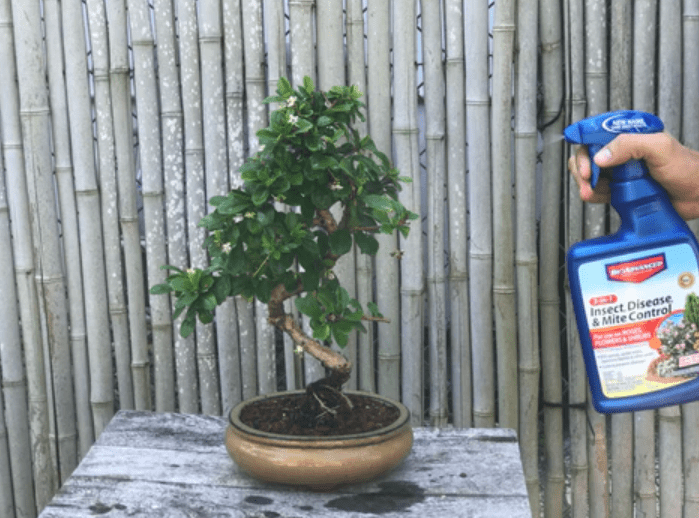
Are crucial for maintaining the health and vitality of your bonsai tree. It’s important to regularly inspect your tree for any signs of pests or diseases and take appropriate action to address them. This can include using natural remedies, such as neem oil or insecticidal soap, to control pests. Additionally, maintaining good watering and feeding practices can help to prevent stress on the tree, making it less susceptible to pest and disease infestations. It’s also important to keep your bonsai tree in a suitable environment that promotes good air circulation and sunlight exposure, as this can help to prevent the development of fungal diseases. By being proactive and attentive to the needs of your bonsai tree, you can effectively manage pests and diseases and ensure that it thrives for years to come.
Common Mistakes to Avoid
Overwatering and underwatering
Are two common mistakes that can be detrimental to the health of your bonsai tree. Overwatering can lead to root rot and other water-related issues, while underwatering can cause the tree to become dehydrated and wilt. It’s important to find the right balance and ensure that your bonsai tree is receiving the proper amount of water. One way to prevent overwatering is to use a well-draining soil mix and to water your tree only when the top layer of soil feels dry to the touch. On the other hand, if you notice that your tree is wilting and the soil is dry, it’s important to give it a thorough watering. Monitoring the moisture levels and adjusting your watering practices accordingly is key to preventing these common mistakes. By avoiding overwatering and underwatering, you can help your bonsai tree to thrive and stay healthy.
Improper soil and pot selection
Are also common mistakes that can impact the health of your bonsai tree. Using the wrong type of soil can lead to drainage issues and root rot, while choosing a pot that is too small can restrict the growth and development of the tree. It’s important to use a well-draining soil mix that allows for adequate air flow to the roots. This will help to prevent waterlogged soil and promote healthy root development. In addition, selecting the right size and shape of pot is crucial for the overall health and growth of your bonsai tree. The pot should be proportionate to the size of the tree and have proper drainage holes to prevent water from accumulating at the bottom. By choosing the right soil and pot for your bonsai tree, you can provide the necessary environment for it to thrive and flourish. Avoiding these common mistakes will help you to maintain the health and vitality of your bonsai tree for years to come.
Ignoring seasonal changes
Can have negative effects on your bonsai tree. It’s important to pay attention to the changing seasons and adjust your care routine accordingly. For example, in the winter, you may need to bring your bonsai tree indoors to protect it from the cold temperatures. In the summer, you may need to water your tree more frequently to prevent it from drying out in the heat. Additionally, seasonal changes can affect the growth and development of your bonsai tree, so it’s important to be mindful of these changes and make adjustments as needed. By paying attention to seasonal changes and providing the appropriate care for your bonsai tree, you can ensure that it remains healthy and continues to thrive throughout the year.
In conclusion, planting and caring for bonsai seeds requires patience, attention to detail, and a deep understanding of the specific needs of each tree species. By following the tips and techniques outlined in this guide, beginners can set themselves up for success and enjoy the rewarding experience of nurturing their own bonsai trees. Remember to be mindful of the unique requirements of each species, provide proper care and maintenance, and enjoy the beauty of your thriving bonsai trees for years to come.
Frequently asked questions And Answer
Some of the best bonsai seeds for beginners to plant are Japanese maple, juniper, and pine. These seeds are relatively easy to grow and maintain, making them perfect for beginners.
The basic steps for planting bonsai seeds include selecting the right soil, planting the seeds at the right depth, providing the right amount of water and sunlight, and regularly pruning and shaping the seedlings as they grow.
It can take several years for bonsai seeds to grow into a mature tree, depending on the species of tree and the care it receives. Patience is key when growing bonsai trees.
Some common mistakes to avoid when planting bonsai seeds include overwatering or underwatering, using the wrong type of soil, and neglecting to prune and shape the seedlings as they grow.
Some essential tools and equipment for planting bonsai seeds include a bonsai pot, well-draining soil, a watering can, pruning shears, and a small rake for grooming the soil.
Bonsai seeds can be planted indoors, as long as they receive enough sunlight and proper care. However, some species may benefit from being planted outdoors in a more natural environment.
Bonsai seeds should be watered regularly, but not too frequently. The soil should be kept moist, but not waterlogged. It’s important to monitor the soil and adjust the watering schedule as needed.
When shaping and pruning bonsai seedlings, it’s important to use sharp, clean tools and to carefully consider the desired shape and style of the tree. Regularly trimming and shaping the tree will help it develop into a beautiful bonsai.
